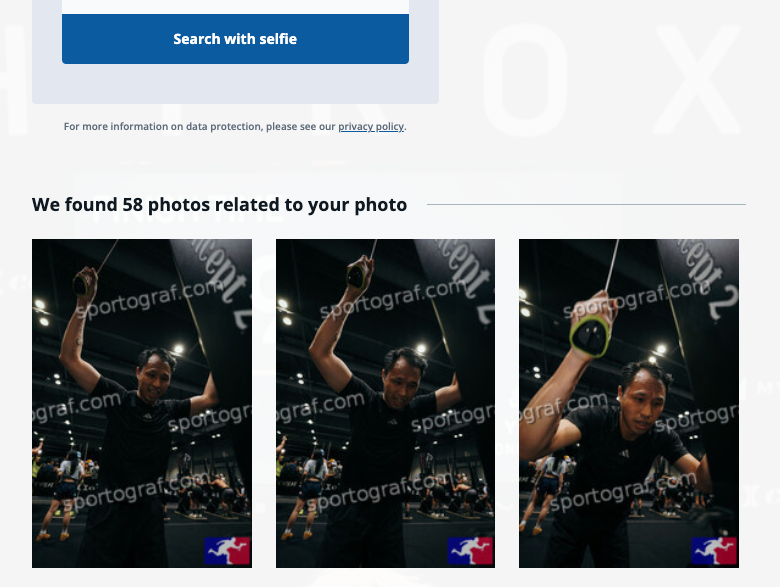The Technology Behind HYROX: How Data, Wearables, and Real-Time Systems Power a Global Fitness Race
- Patrick Wong

- Jul 31
- 4 min read

Completing my first solo HYROX event was an unforgettable experience — not just as an athlete, but also as a technologist. Beyond the physical challenge, I was deeply impressed by the seamless orchestration of the entire race journey, from online registration to real-time lap tracking, and the personalized digital experiences along the way. In this article, I’ll break down the technology ecosystem that powers HYROX, and how it blends sports science, timing infrastructure, and digital innovation into a uniquely immersive fitness race.
1. Registration and Pre-Event Experience: Smooth, Data-Driven, and Athlete-Centric
From the moment you register, HYROX sets the tone with a well-structured digital flow. Each athlete receives a unique ID tied to their division, wave, and heat, which is managed by a centralized registration and timing platform. Before race day, athletes can easily check their starting time by searching their names on the official site — no login required.
Behind the scenes, marketing automation tools like ActiveCampaign are used to drive the pre-event engagement. This includes:
Order confirmations
Ticket personalization with name and division
Pre-registration instructions
Reminder emails and final race prep guidance
These automation flows reduce manual workload, ensure consistency, and enhance communication throughout the participant journey — building both excitement and clarity leading up to race day.
The venue layouts and course designs are clearly introduced through simple yet effective animations and floor plans. This helps competitors, especially first-timers, to mentally prepare for transitions between functional stations and running laps. The combination of clarity and automation significantly reduces confusion and supports race-day readiness.

2. Real-Time Lap Tracking and Timing: Precision Meets Automation
During the race, timing chips (typically attached to the ankle) capture every checkpoint and station completion. These chips interact with a network of antennas and timing mats positioned throughout the venue, enabling real-time lap tracking and functional zone timing.
This system doesn't just capture data — it powers the real-time race leaderboard, tracks personal progress, and enables the dynamic display of results across screens at the venue. It's a brilliant example of how RFID (Radio-Frequency Identification) and timing software work together in a high-intensity sporting context.

3. Personalized Digital Boards: Instant Recognition Through Chip Detection
One of the most impressive features of the event was the Digital Photo Boards. After completing your race, standing in front of a board triggers it to recognize you automatically — displaying your name and finish time instantly. How? The board uses chip timing data and proximity sensors to identify who is standing in front of it.
This innovation transforms what would be a manual photo-checking process into an interactive, magical moment for every participant. It also links directly to Sportograf, the official photography partner, making it easy for racers to find and download their personal race shots.
While exact technical details are proprietary, a high-level view of the likely tech stack includes
RFID timing chip data
Ultrasonic or IR proximity sensors
Raspberry Pi or ESP32 microcontrollers
Node.js backend applications
Amazon S3 for dynamic graphic and text overlays
Cloudflare CDN to ensure ultra-fast content loading
4. Sportograf Integration: AI + Timing = Smart Photo Tagging
Sportograf’s integration is another masterclass in automation. Using AI-based facial recognition, the system automatically tags photos of you during the race — whether you’re lunging, sled-pushing, or sprinting to the finish line.
Sportograf uses timing chip data to ensure accuracy. This integration dramatically reduces the time needed to filter through thousands of race-day photos. For athletes, it’s a seamless way to relive the event moments after they cross the finish line.

5. Wearable Device Support: Garmin x HYROX Collaboration
The collaboration between HYROX and Garmin adds another layer of digital insight. Using a dedicated HYROX workout mode in supported Garmin devices, athletes can track heart rate, pace, lap splits, and station segments in real time. The data syncs post-race, offering detailed breakdowns of performance metrics.
For serious competitors, this means not only better race-day insights but also smarter training plans based on past performance data — a great example of how wearable tech is reshaping how we train and compete.
6. Social Sharing and Community Integration: Building a Digital Race Culture
HYROX doesn’t stop at data and wearables — it excels in building a connected fitness community. The post-event experience is designed for easy sharing: photos, times, and rankings are easily accessible and made for social media.
Many features are gamified:
Badges for completing multiple races
World ranking leaderboards
Photo booth-style finish line screens to share with hashtags like #hyroxlife
Results pages are optimized for sharing, and many athletes proudly post their screenshots and personal bests across Instagram and Strava. This turns every race into a shared celebration and fuels the viral growth of the HYROX community worldwide.


Conclusion: HYROX as a Blueprint for the Future of Tech-Enabled Fitness
HYROX is more than a fitness race — it’s a case study in how event technology, wearables, and data-driven personalization can come together to create a global movement. From real-time tracking to automated photo recognition, from chip-triggered screens to wearable insights, HYROX delivers a future-ready race experience.
As a participant and technologist, I see HYROX as an example of how fitness events can go beyond physical performance to deliver smart, seamless, and deeply personal experiences. The finish line isn’t the end — it’s just the beginning of a new data-powered fitness journey.





Comments